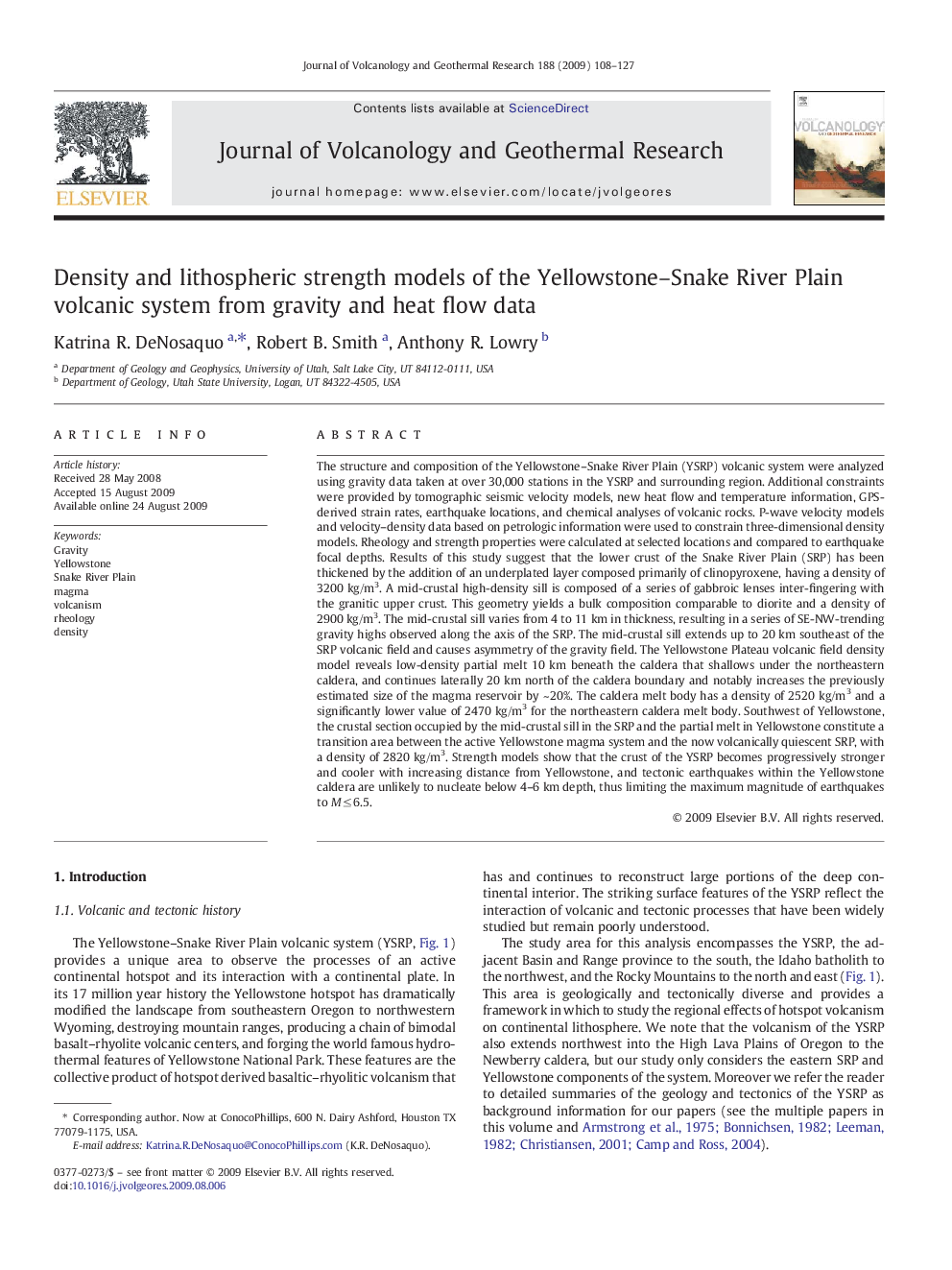| کد مقاله | کد نشریه | سال انتشار | مقاله انگلیسی | نسخه تمام متن |
|---|---|---|---|---|
| 4713173 | 1638428 | 2009 | 20 صفحه PDF | دانلود رایگان |

The structure and composition of the Yellowstone–Snake River Plain (YSRP) volcanic system were analyzed using gravity data taken at over 30,000 stations in the YSRP and surrounding region. Additional constraints were provided by tomographic seismic velocity models, new heat flow and temperature information, GPS-derived strain rates, earthquake locations, and chemical analyses of volcanic rocks. P-wave velocity models and velocity–density data based on petrologic information were used to constrain three-dimensional density models. Rheology and strength properties were calculated at selected locations and compared to earthquake focal depths. Results of this study suggest that the lower crust of the Snake River Plain (SRP) has been thickened by the addition of an underplated layer composed primarily of clinopyroxene, having a density of 3200 kg/m3. A mid-crustal high-density sill is composed of a series of gabbroic lenses inter-fingering with the granitic upper crust. This geometry yields a bulk composition comparable to diorite and a density of 2900 kg/m3. The mid-crustal sill varies from 4 to 11 km in thickness, resulting in a series of SE-NW-trending gravity highs observed along the axis of the SRP. The mid-crustal sill extends up to 20 km southeast of the SRP volcanic field and causes asymmetry of the gravity field. The Yellowstone Plateau volcanic field density model reveals low-density partial melt 10 km beneath the caldera that shallows under the northeastern caldera, and continues laterally 20 km north of the caldera boundary and notably increases the previously estimated size of the magma reservoir by ~ 20%. The caldera melt body has a density of 2520 kg/m3 and a significantly lower value of 2470 kg/m3 for the northeastern caldera melt body. Southwest of Yellowstone, the crustal section occupied by the mid-crustal sill in the SRP and the partial melt in Yellowstone constitute a transition area between the active Yellowstone magma system and the now volcanically quiescent SRP, with a density of 2820 kg/m3. Strength models show that the crust of the YSRP becomes progressively stronger and cooler with increasing distance from Yellowstone, and tectonic earthquakes within the Yellowstone caldera are unlikely to nucleate below 4–6 km depth, thus limiting the maximum magnitude of earthquakes to M ≤ 6.5.
Journal: Journal of Volcanology and Geothermal Research - Volume 188, Issues 1–3, 20 November 2009, Pages 108–127